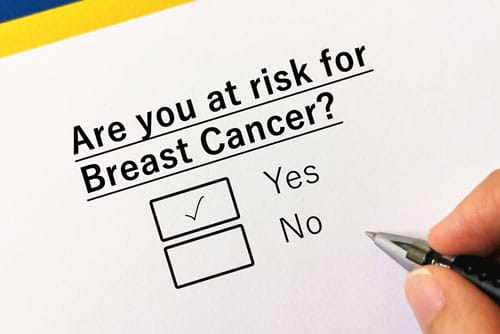Breast Cancer: Symptoms, Risk Reduction, and Early Detection

Earlier detection of breast cancer offers a better chance for a positive outcome.
What do we need to know about breast cancer?
Breast cancer is the most frequently diagnosed cancer (other than skin cancer) among American women, with about 264,000 diagnosed each year. Current statistics indicate that approximately 42,000 of those diagnosed will not survive.
Breast cancer isn't just a "female" disease. Each year, approximately 2,710 American men are diagnosed with breast cancer. Of those men, 20% are not likely to survive.
Annual screening mammograms are the best way to detect breast cancer early. A mammogram can detect breast cancer and other lesions in your breast tissue before symptoms even appear. Earlier detection of breast cancer or any abnormality improves your chance for a positive outcome.
However, even if you have a medical exam and mammogram each year, there are eleven months between those events when symptoms can begin and may go unnoticed. Therefore, it is essential to know what your breasts typically look and feel like, so you'll be aware of any changes.
What symptoms should prompt you to consult with your doctor?
The most obvious symptom of breast cancer is a new lump or mass. Knowing and recognizing other possible symptoms of breast cancer can assist in identifying a problem even before detecting a mass or lump. These include:
- Swelling of all or part of a breast (even if you do not feel a lump)
Skin dimpling (sometimes looking like an orange peel) - Breast or nipple pain
- Nipple retraction (turning inward)
- Breast skin or nipple that is red, dry, flaking, or thickened
- Nipple discharge (other than breast milk)
- Swollen lymph nodes under the arm or near the collarbone
Many of these same symptoms can also be attributed to benign (non-cancerous) breast conditions. As a result, you should report any new change or other symptoms to your healthcare provider at your earliest opportunity.
How can you reduce your breast cancer risk?
While breast cancer detection is crucial, prevention is always best. Here are nine lifestyle choices that could make a significant impact on reducing your risk for breast cancer:
- Keep a healthy body weight and exercise regularly.
- Choose not to drink alcohol or drink in moderation.
- If you are taking hormone replacement therapy or birth control pills, ask your doctor about the risks.
- Stop smoking. If you don't smoke—don't start.
- Limit your exposure to second-hand smoke.
- If possible, breastfeed your children.
- Conduct regular self-examinations to help you identify changes early.
- Talk to your doctor about any family history of breast cancer.
- Ask your healthcare provider when you should get a mammogram and follow through.
Early detection of breast cancer saves lives.
According to the Illinois Department of Public Health (IDPH), the rate of detecting breast cancer at the most curable stage is less than 10%. Remember, knowing what to look for does not take the place of recognizing changes in your body and having routine medical evaluations and mammograms for breast cancer.
Early detection of breast cancer can improve your odds of successful treatment and a longer, healthier life.

